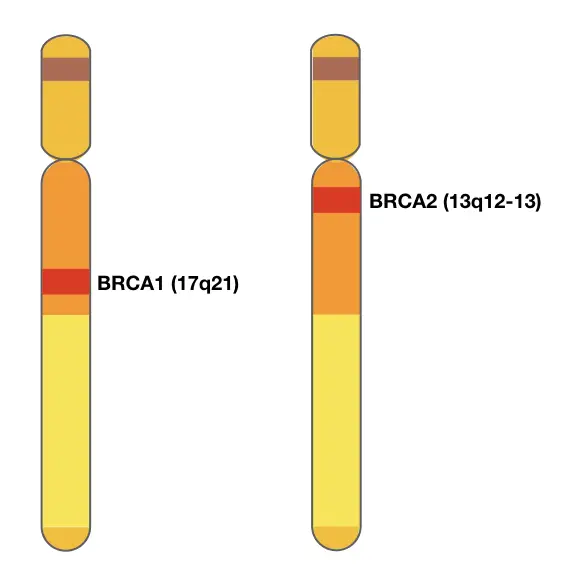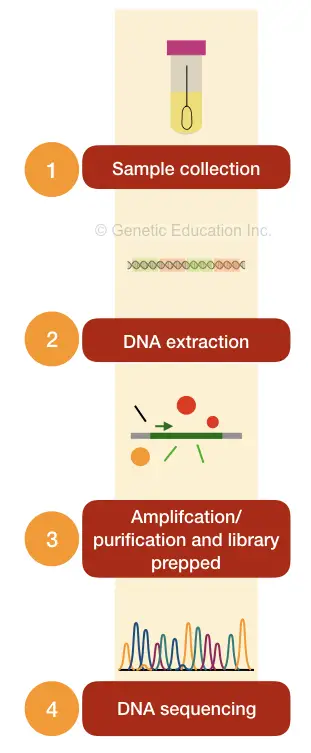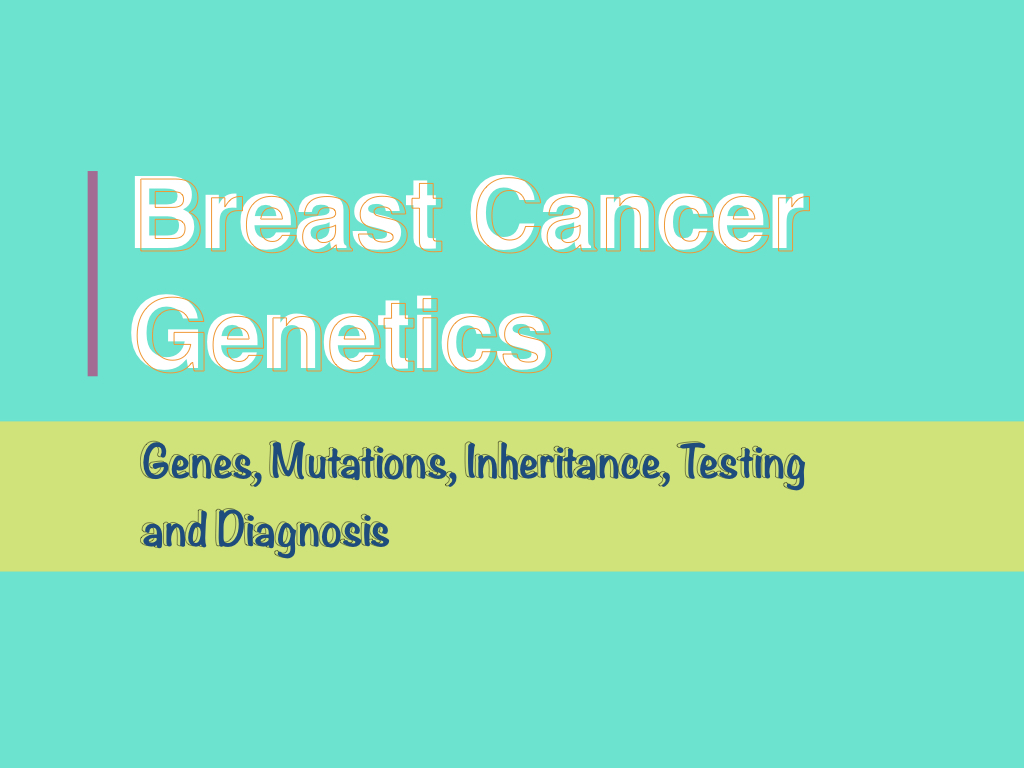“Genetic mutations of BRCA1, BRCA2 and other genes produce a tumor in the breast, a heritable one that occurs in females and males is known as breast cancer.”
Breast cancer is a type of inherited cancers, very rare but can be transmitted to offspring. Though it is commonly observed in females, the possibility of breast cancer can’t be avoided in males as well.
Cancer prompts abnormal cell growth, it migrates to other parts of the body, can cause serious problems, however, some can be prevented. Various types of cancer are broadly divided into two major categories based on the involvement of genetic factors, viz inherited cancer and non-inherited cancers.
The inherited cancer can be spread to offspring too, as I said. Breast cancer is very common in females with the predisposition of genetics, though other reasons are also there. When genetic factors are involved in it, they can inherit.
A lump in the breast and pain are a common sign and symptoms of it can be cured by medical treatments.
Two types of gene sets are commonly involved in the process of developing cancer; tumor suppressor genes and oncogenes. The tumor suppressor genes regulate the activity of cell division and control cell proliferation while the oncogenes induce cell growth.
Uncontrolled activity either causes cancer, which means, dysregulation of the cell cycle or cell growth. The BRCA genes are tumor suppressor genes that can regulate cell division.
Breast cancer is a common cancer type that occurs in females. In the present article, I will give you information regarding breast cancer, how it occurs. What are the genetic factors, genes and mutations involved in it?. With this, I will give some other information regarding common symptoms, genetic tests and treatment options regarding the same.
Read more: How is Genetic Testing done?- Explained.
Key Topics:
What is breast cancer?
“A Kind of cancer- occurs especially in the tissues or cells of the breast that cause uncontrolled cell division is referred to as breast cancer.”
Connective tissues, ducts and lobules are three parts of a breast. Here the connective tissues make the structure of the breast, works to hold ducts and lobule parts, a type of fatty and fibrous tissues. The glands or lobules secret milk while the ducts carry it to the nipple.
Various types of breast cancer happen in various tissues in which cancer in lobules and ducts are common. When it occurs around the ducts and grows out, it is known as invasive ductal carcinoma, when it occurs in the lobular tissues and spreads out, it is known as invasive lobular carcinoma.
Note that both types of breast cancer can be spread to other tissues as well- known as metastasizing. Through the blood or lymph vessels, it spread to other body parts. If it converts into metastatic cancer, it may spread to other surrounding tissues like bones, lungs, brain or liver.
A heavy lump in the breast and pain are common symptoms initially seen in the patient. Being a female, genetic factors, obesity and lack of physical activity are common reasons for it.
Breast cancer is commonly found in females but it also occurs in males. As males lack lobular tissue, only ductal cancer is frequently observed.
Around 12% of women in the USA are suffering from breast cancer every year.
As we said, some gene mutations especially the BRCA genes cause an inherited type of cancer that runs in the family.
Signs and symptoms of breast cancer:
At the initial stage, an increase in breast size, change in breast shape, nipple discharge, redness scaliness and dimpling observe.
Peeling, crusting, pigmentation on the skin surrounding the nipple and scaling also observed.
Pain and lump in breast tissue observe later.
Read also: Pregnancy Genetic Testing- What, When and Why.
Genetics of Breast cancer:
About 10% of breast cancer is genetics- inherited in which gene mutations are involved. Among those, 90% of breast cancer is caused by mutations in BRCA1 and BRCA2 genes, other genes are P53, STK11, ATM, PTEN, CHEK2, PALB2.
Inheritance pattern:
Not all breast cancer is inherited, except some caused by either of BRCA genes. Typically the mutations acquired in the germ cells are inherited to offspring or consecutive generations. Breast cancer occurs in somatic tissues, still, the mutations acquired by the BRCA genes can be inherited.
Both the genes follow the pattern of autosomal dominant inheritance in which a single mutant copy of a gene is enough to cause disease in progenies.
As it mostly occurs in females, it is inherited in females through either male or female both. It may occur in males too, we already have discussed it.
The genes are located on autosomal chromosomes. Autosomes are genes located other than sex chromosomes, here a single mutant allele can spread cancer. Literally, homozygous mutants, as well as heterozygous both, are at risk of having cancer- 75% of progenies have a chance of getting cancer.
In a cell, two copies of each gene are present on two copies of chromosomes. One copy inherited from the father and one from the mother to the fetus. If any of the parents carry a mutation on any of the copies of a BRCA gene, it is inherited from to child.
Importantly note that the presence of mutation elevates the likelihood of developing cancer. It means, having a mutation doesn’t conform that cancer will develop.
Other genes associated with cancer may follow a different pattern of inheritance. Thus the clear genetic pattern of breast cancer is unclear.
Read more: Sickle Cell Anaemia: Definition, Cause, Genetics, Trait, Symptoms and Diagnosis.
Genes involved in breast cancer:
BRCA1 gene:
The BRCA1 gene acronym as the breast cancer gene 1 is located on chromosome 17- the autosome, at q21.31. It encodes human breast cancer type 1 susceptibility protein, a type of tumor suppressor that regulates cell division.
It is also known as ‘caretaker genes’.
Mary-Claire King’s laboratory scientists had first reported the BRCA1 gene in 1990 and it was closed in 1994 by the National Institute of Environmental Health Science, University of Utah, and Myriad genetics.

BRCA2 gene:
The BRCA2 gene is located on chromosome 13 at q13.1 and acronym as breast cancer gene two, another candidate gene in breast cancer.
It is also a type of tumor suppressor gene.
Mutations of BRCA1 and BRCA2 are majorly involved in hereditary breast cancer, breast-ovarian cancer and ovarian cancer. Around 3% of breast cancer and 10% of ovarian cancer have either BRCA1 or BRCA2 gene mutations.
In addition to this, the mutations in either of the genes involved in prostate cancer in male, peritoneal cancer and fallopian tube cancer. It may also cause pancreatic cancer in both males and females.
The normal function of breast cancer susceptibility proteins is to regulate cell division. It actually controls the overall process of cell division and prevents rapid cell growth.
Mutation in either type of tumor suppressor genes can mislead the normal function of the protein and develop uncontrolled tumors. It occurs in autosomal breast tissues.
As we said both genes follow the autosomal dominant pattern of inheritance.
Moreover, besides causing breast cancer the special type of gene mutations known as FANCS and FANCD1 of BRCA1 and BRCA2, respectively are associated with Fanconi anemia and Fanconi anemia subtype. Both mutant alleles are inherited from both parents (the rare autosomal recessive condition).
The prevalence of BRCA gene mutations also changes from one race to another and from one ethnic group to another. For instance, the harmful BRCA1 and BRCA2 gene mutations are commonly found in Ashkenazi Jewish descendants, Dutch, Icelandic and Norwegian people but less commonly found in Americans or Africans.
PTEN gene:
The PTEN- phosphatase and tensin homology is a gene located on chromosome 10 at 10q23.31. It’s a tumor suppressor gene that helps in controlling cell growth. With mutations in PTEN genes, the chance of getting breast cancer is ranging from 25% to 77% at the age of 40 to 50.
PT53 gene:
PT53 or P53 gene encodes a protein known as tumor protein 53. It is also categorized into tumor suppressor genes which regulate the proliferation of cells into tumors.
The P53 gene is located on chromosome 17 at 17p13.1. The protein p53 actually stops the spread of tumors. Every woman with p53 gene mutations suffers from breast cancer (100% prevalence), while 73% of cases in men with mutations in the present gene suffer from breast cancer.
The PT53 gene is a candidate gene in various other types of carcinoma as well such as leukemia, brain tumor, cancer of the bone and connective tissues and of course, breast cancer.
PT53 gene mutations cause a condition known as Li-Fraumeni syndrome, people with these conditions also have a high risk of getting breast cancer. It is also associated with ovarian cancer, Lung cancer, Wilms tumor and Melanoma.
ATM gene:
The ATM gene is located on chromosome number 11 at 11q22.3 whose function is to make a protein that helps in controlling cell proliferation. Mutations in ATM genes are associated with Ataxia-telangiectasia, breast cancer, bladder cancer and Melanoma.
The risk of having breast cancer by ATM mutations is ~35% by age 80. Their role in breast cancer is less known.
PALB2:
The PALB2- partner and localizer of the BRCA2 gene is located on chromosome 16 at 16p12.2. The protein product of the present gene helps mainly in double-strand break repair and genome maintenance.
It actually works in association with another tumor suppressor gene- BRCA2 to repair the damaged DNA.
As the gene is more susceptible to familial pancreatic, it is also associated with breast cancer.
14% of people can develop breast cancer having a gene mutation of PALB2 and as the age increases the risk of getting breast cancer also increases.
Other genes like BAD51C, RAD51D, STJ11, NF1, CHEK2, CDH1, NBN, BARD1and BRIP1 gene mutations are also associated with the risk of breast cancer.
Read further: Cancer Genetic Testing- What Is It & How It’s Done?.
Causes of breast cancer:
Breast cancer is not completely an inherited cancer, means not genetic completely. There are other factors as well which results in the present condition. Here I am enlisting factors that most likely cause breast cancer.
Genetic factor:
As we explained earlier, genetic factors are responsible for breast cancer in approximately 10% of cases. The candidate genes are BRCA1 and BRCA2, though other genes also play a role in it.
No chromosomal alterations to date reported associated with breast cancer, thus it is caused by gene mutations only.
Previous family history:
The risk of getting breast cancer increases for a woman if any one of her close relatives has a previous history of either breast cancer, ovarian cancer or ovarian-breast cancer. Also, have any of the BRCA1 or BRCA2 gene mutations running in her family can also cause it.
If having breast cancer in any of the close relatives like mother, sister, cousin or even her father or brother can evaluate the chances of getting cancer.
Note that the previous history of genetic disorders of gene mutations other than the candidate genes are not associated with it.
A female:
Breast cancer is more common in females than in males. Hence the chances of getting breast cancer in females are more.
A personal history of breast cancer or condition:
If a female has a personal history of breast cancer, means, if she had breast cancer history, the likelihood of getting cancer in another breast increases.
Increase in age:
As the maternal age increases, the chance of getting breast cancer also increases. Females above the age of 40 or 50 have a higher risk of breast cancer.
Presence of mutant alleles:
Another genetic factor to cause breast cancer is the presence of mutant alleles in the family. Mutant alleles of BRCA1, BRCA2, P53, STK11, ATM, PTEN, CHEK2 and PALB2 can increase the risk of carrying breast cancer.
Exposed to radiation:
If a female is exposed to radiation especially in the chest area she has a higher risk of getting breast cancer.
Besides these major factors, some other factors that cause the present conditions are;
- The early menstrual cycle before the age of 12.
- Getting menopause at an older age.
- Pregnancy after the age of 30.
- Consumption of alcohol.
- Taking hormonal therapy after postmenopause.
- Dense breasts- dense breasts have more connective tissues that increase the risk of cancer.
Note that these are the conditions having the risk of getting breast cancer.
Which are the conditions likely for inherited breast cancer?
The inherited breast cancer can be managed if diagnosed earlier. Some conditions indicating the presence of inherited cancer, are discussed here.
- The occurrence of multiple breast cancer in the family.
- Breast cancer in the family occurs due to gene mutations of the BRCA1 or BRCA2 gene.
- Cases of male breast cancer in the family.
- Cancer in both the breast, simultaneously in a single female of a family.
- The occurrence of breast cancer before the age of 50.
- People belong to the Ashkenazi Jewish ethnicity.
Read more: Genetics of MTHFR: Gene, Mutations, Variants, Inheritance and Testing.
Diagnosis of breast cancer:
Breast cancer diagnosis uses various techniques including physical examination, breast cancer mammogram, ultrasound, chest X-ray, MRI, biopsy and genetic testing.
Among all the techniques the breast cancer mammogram is one of the most common and widely used diagnostic techniques so far.
Physical examination:
Not so trusted, but an experienced doctor can physically examine the structure and appearance of the breast to know cancer. The expert checks the size, shape, lymph node, discharge and feel for lumps in the breast.
The expert verbally also asks several questions to know and understand the condition.
Mammogram:
The mammogram technique is a kind of X-ray or breast X-ray, in which the expert uses X-rays to screen breast cancer. Its experts observe any unusual signs they suggest further confirmatory tests to know more.
Breast ultrasound:
A breast ultrasound is done to find out lumps, solid unusual mass or fluid-filled cyst in the breast area.
Biopsy:
A breast biopsy is the finalized diagnostic test advised once a mammogram is confirmed. In this test, the examiner collects the tissue sample from the suspected site and send it for testing.
The biopsy expert examines the tissue sample for detecting the presence or absence of a tumor.
Genetic testing:
Genetic testing is yet another option to disguise the condition if the cancer is inherited. Here in the genetic testing the BRCA1 and BRCA2 genes are closely examined to detect mutations.
Polymerase chain reaction, DNA sequencing and DNA microarray like techniques are employed to do so. DNA sequencing precisely sequences whole genes to detect sequence variation. Other less common genes are also sequences if necessary.
A specialized microarray assay is designed to cover all the known mutations of all the genes associated with breast cancer. The microarray for breast cancer can screen all possible mutations.
Quantitative PCR measures the amount of gene expression of the allele or mutant allele.
Note that genetic testing doesn’t confirm whether the gene mutations are associated with the tumor or not. It is advised only to have family histories of reported breast cancer.

MRI-
Magnetic resonance imaging for breast uses magnet and radio waves and creates the picture of the breast or whole chest to find out any alterations in the breast. It is also used widely much like the mammogram test, although is a bit costly.
Preventive strategies:
Breast cancer occurs for various reasons, still, we can avoid it by taking several preventive measurements. Some suggestions and changes in lifestyle can reduce the risk of breast cancer.
Avoid alcohol consumption or limit alcohol intake. Alcohol is actually a curse for women as it may elevate the chances of breast cancer and cause serious birth defects during pregnancy.
By accepting a healthy lifestyle, one can reduce the chance of breast cancer. Exercise regularly for 30 minutes every day. Reduce body fat. Eat green veggies and fruit or healthy food and sleep well. Also, take care of your weight and maintain a healthy weight.
Women undergo postmenopausal hormonal therapy which sometimes leads to breast carcinoma. Reduce postmenopausal hormonal therapy and take the advice of your doctor.
One of the biggest preventive strategies women have to develop is self-awareness. Educate yourself to detect any visible or nonvisible change in your breast. If you feel pain or lump or un-comfort in your breast immediately contact your doctor.
Conclusion:
Breast cancer is one of the most common carcinomas in women and increases rapidly, though the exact reason for it is unknown, by studying the genetics of breast cancer or genes involved in breast cancer can help to learn more about this condition.
It can also help to develop novel gene therapies and other preventive strategies to overcome the problem. However, till now we have some therapeutic options to cope up with it.
BRCA1 and BRCA2 are two major candidate genes involved in the present condition, still, there are a lot more genetic factors in breast carcinoma, uncovered.
On the safe side, every woman has to go for breast cancer screening once in their early life.


